
views
It was nine years ago, when the Criminal Amendment Act, 2013, came into force with new provisions — 326A and 326B — that acid attacks were penalised in India. However, the numbers analysed by News18 show that since 2016, not even in 10 per cent of the cases pending for trials in the particular year have there been convictions.
The process is so slow that the total pending cases of acid attacks and attempts of acid attacks have nearly doubled between 2016 and 2021. At the end of 2016, India had 380 cases pending trial; this jumped to 754 by the end of 2021.
According to the National Crime Records Bureau (NCRB) data analysed by News18, at least 1,686 cases of acid attacks and attempts to throw the liquid were reported in India between 2016 and 2021. That means, on an average, each year India saw 281 cases of these attacks. That further means that each month, roughly 24 attacks took place.
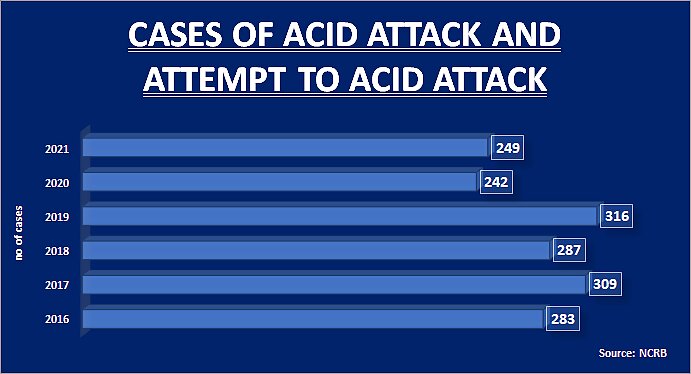
However, convictions were seen in just 76 cases during the 2016-21 period. This means roughly 13 convictions each year and a case per month.
According to the ‘Court Disposal of Crime against Women’ section of the NCRB, in 2016, there were 407 cases for trial related to ‘Acid Attack and Attempt to Acid Attack’. Of these, just 10 — a little over two per cent — were convicted and another 17 were acquitted. The next two years in 2017 and 2018, of the total pending cases for trial under the sections, little over three per cent were convicted. It continues to drop and in 2021, it was not even one per cent.
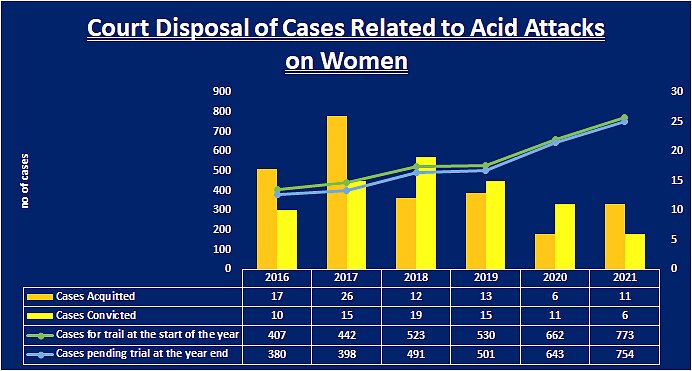
In 2021, just three cases of acid attack and an equal number of attempted acid attacks were convicted out of total 773 cases under both the crime-head and at the end of the year, the total cases pending trial were 754. In 2016, there were 407 cases for trial and at the end of the year, there were 380 cases left.
The data also showed that more cases were acquitted than convicted. In the 2016-21 period, at least 76 cases were convicted while 85 were acquitted.
Further, the overall conviction rate in the country – cases convicted out of cases where trials were completed – have also been very low. In 2021, it was just 20 per cent for acid attack cases. Clubbed with attempted attack, the overall conviction rate under the two crime heads was 33.33 per cent. Between 2016 and 2021, the conviction rate for acid attacks and attempted acid attacks has ranged between 33 per cent and 65 per cent.
As per the law, “acid” includes any substance which has acidic or corrosive character or burning nature that is capable of causing bodily injury leading to scars or disfigurement or temporary or permanent disability.
The data analysed also revealed that the pendency percentage at the court level was over 90 per cent for the 2016-21 period but when it comes to the police level, it was less than 40 per cent. At the court level, pendency percentage is the cases pending trial at the end of the year out of the total cases for trial.
Pendency percentage at the police disposal level – cases pending investigation at the end of the year out of the total cases for investigation – has ranged between 28 and 40 per cent during the 2016-21 period. The charge-sheet rate, on the other hand, was more than 80 per cent — ranging between 83.2 and 89 per cent.
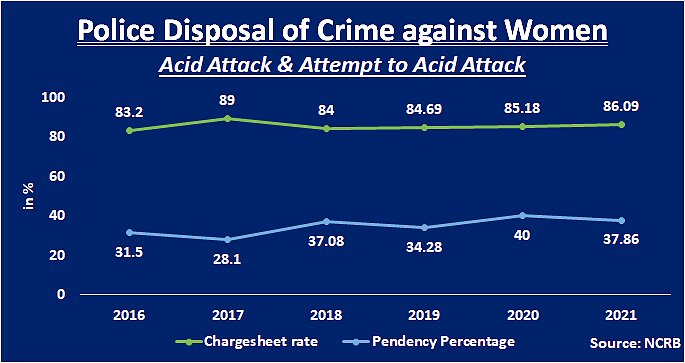
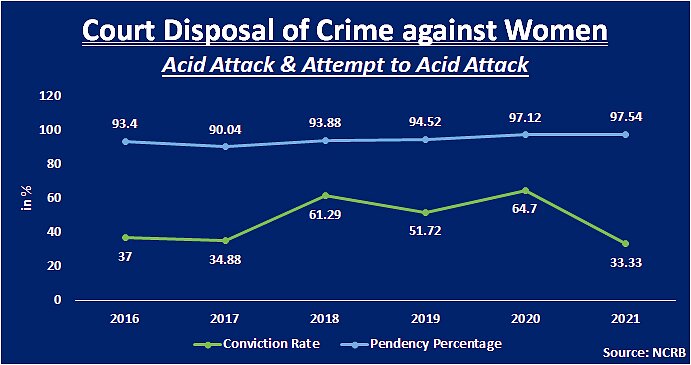
WHAT DOES THE LAW SAY?
According to the Union Home Ministry, the offence of acid attack is punishable under Section 326A and 326B of Indian Penal Code (IPC).
Section 326A states that “whoever causes permanent or partial damage or deformity to, or burns or maims or disfigures or disables, any part or parts of the body of a person or causes grievous hurt by throwing acid on or by administering acid to that person, or by using any other means with the intention of causing or with the knowledge that he is likely to cause such injury or hurt, shall be punished with imprisonment of either description for a term which shall not be less than ten years but which may extend to imprisonment for life, and with fine”.
It further says that the fine should be “just and reasonable” to meet the medical expenses of the treatment of the victim and will be paid to the victim.
Section 326B of the IPC reads that: “Whoever throws or attempts to throw acid on any person or attempts to administer acid to any person, or attempts to use any other means, with the intention of causing permanent or partial damage or deformity or burns or maiming or disfigurement or disability or grievous hurt to that person, shall be punished with imprisonment of either description for a term which shall not be less than five years but which may extend to seven years, and shall also be liable to fine.”
The law also stated that permanent or partial damage or deformity should not be required to be irreversible.
The Union Home Ministry, in 2015, issued an advisory to all states to ensure speedy justice in cases of acid attacks by expediting prosecution.
In 2013, the Supreme Court of India had banned over-the-counter sale of acid across the country. However, women and young girls continue to be victims even today. Earlier this week, a school girl was attacked with acid in Delhi as two masked men on a bike threw the liquid on her minutes after she left her home for school.
Read all the Latest India News here














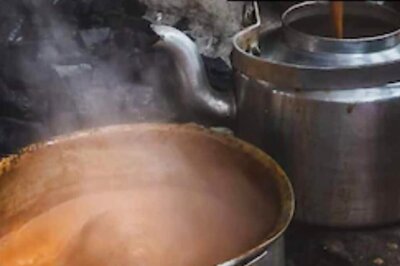


Comments
0 comment